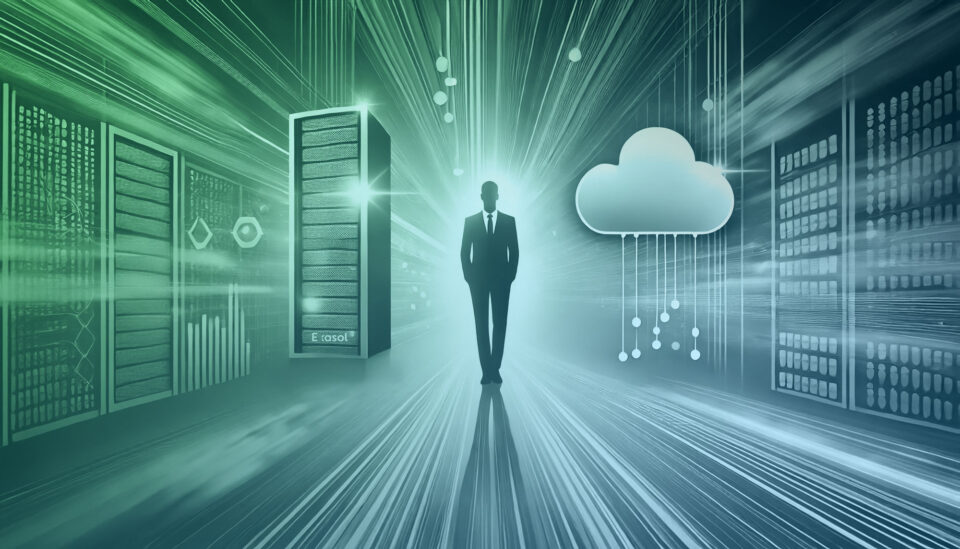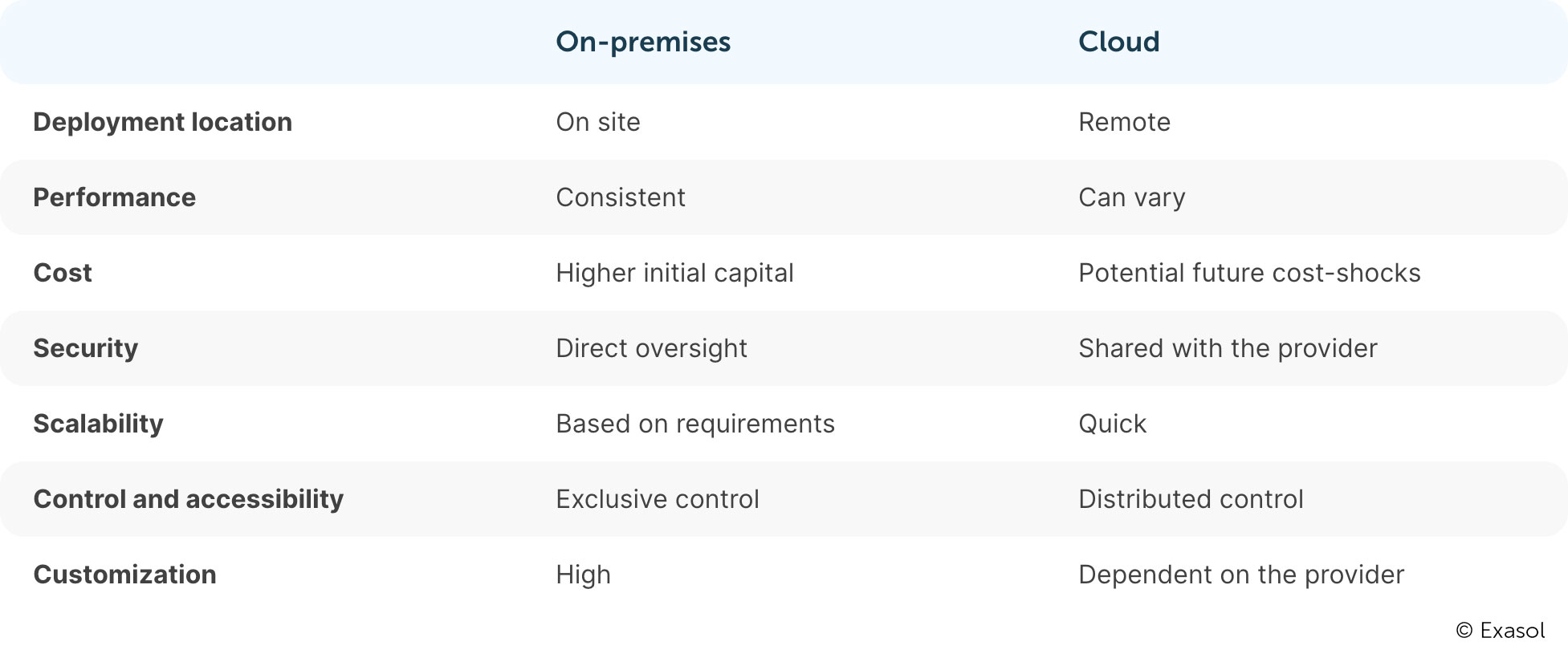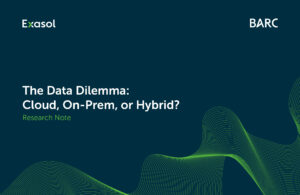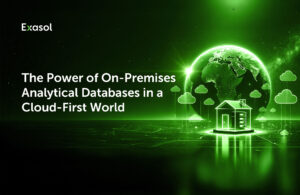
On-Prem vs Cloud: Choosing the Right Solution
In the realm of IT infrastructure, two options reign supreme: on-premises and cloud. Both have their unique strengths and weaknesses.
On-premises infrastructure offer control and customization. They allow businesses to manage their IT infrastructure in-house. Cloud solutions, on the other hand, provide flexibility and scalability based on a subscription model from a third-party provider.
But how do you choose between on-premises and the cloud? This decision is far from straightforward. It involves a careful analysis of several factors, including potential performance, cost, security, scalability, and business needs.
On-prem or cloud?
Explore your options with expert insights—find the perfect solution for your business today.
In this article, we delve into the on-prem vs cloud debate. We aim to provide a comprehensive comparison of these two options.
We’ll explore their key differences, pros and cons, cost implications, and security considerations, among others. By the end of this article, you’ll have a clearer understanding of on-premises vs cloud discussions and a solid foundation to make an informed decision.
“Choosing the right infrastructure is a strategic decision that will impact your organization for years. Take time to evaluate options, consult with experts, and weigh the trade-offs.”
Mathias Golombek, CTO, veteran in the data industry
On-Prem vs Cloud: Quick Rundown
On-premises deployment has been the traditional choice for many businesses. Cloud, on the other hand, has gained traction in the last decade. However, there is an increasing trend in cloud repatriation that is gaining momentum.
To decide between these options, you need to grasp their basic concepts. We will dive into pros and cons later, but here is a quick rundown of the main differences:
Performance: On-premises can positively shock you with speed capabilities; cloud is still behind.
Control: On-premises gives complete control; cloud offers third-party management.
Scalability: Cloud scales quickly; on-premises depends on physical resources.Costs: On-premises involves upfront capital; cloud adopts a pay-as-you-go model.

Let’s explore these technologies further, beginning with on-premises computing, followed by the cloud, and the key differences between them.
What is On-Premises Computing?
On-premises computing involves managing IT systems within your organization’s physical location. It offers significant control over hardware, software, and data. This approach allows for high customization and integration with existing systems.
Businesses can tailor their IT infrastructure to specific needs.
What is Cloud Computing?
Cloud computing relies on internet-based service providers. These providers offer resources like storage, computing power, and applications.
This model is appealing due to its flexibility. Companies can adjust their resource usage based on demand. Cloud computing operates on a subscription model. Businesses pay for what they use, reducing the need for large initial investments. However, it requires a reliable internet connection, depends on third-party vendors for data security and service uptime as well as unstable cost pricing models. More on that later.
Cloud vs On-Premises: Key Differences
Key distinctions lie in deployment location, control, customization options, costs, security, scalability, and performance. These factors influence how businesses manage their IT infrastructure.
Deployment Location (On-Premises Storage vs Cloud Storage)
In on-premises setups, businesses house their hardware and software on-site. This allows complete physical control over your IT assets without a third-party provider having access to and control over your data stack.
Conversely, cloud environments store data and applications in remote data centers. Managed by service providers, these centers remove the need for local hardware. This difference affects not only control but also maintenance responsibilities. You can check deployment options from our company and go through the details with our team.
On-Premises Sofware vs Cloud: Performance and Reliability
When evaluating on-premises vs cloud solutions, performance and reliability are critical considerations. These factors impact how effectively your systems support business operations.
On-premises performance is usually consistent and can reach incredible speed. For example, our customer Piedmont Healthcare saw a 1000x increase in performance over SQL server workloads.
In contrast, cloud performance can vary based on service provider and network conditions.
Reliability in both models hinges on maintenance and backup strategies. It’s essential to assess these components to ensure seamless business continuity.
On-premises Performance
On-premises offer reliable performance because resources are dedicated to an organization. This can be advantageous for businesses with stringent performance needs.
Real-time data analytics is a necessity and, oftentimes, a requirement considering the sheer volume and processing needs.
However, organizations need skilled IT staff to manage these elements effectively, ensuring minimal disruptions.
Despite the need for upkeep, on-premises setups provide control over configurations. This allows for adjustments tailored to specific performance benchmarks and objectives.
Cloud Performance
The cloud can deliver performance that scales with demand yet depend on factors like internet speed and provider capability. The variability may affect performance, particularly in regions with limited bandwidth.
Reliability is enhanced through cloud redundancy and failover mechanisms. These features offer robust disaster recovery options, ensuring uptime even amidst infrastructure failures.
Cloud service providers handle most operational tasks, like updates and patches. This reduces the burden on internal teams, allowing businesses to focus on core tasks instead.
Cloud vs On-Premise Cost
Cost is a pivotal factor when deciding between on-premises and cloud infrastructure. Different cost structures and ongoing expenses impact long-term budgeting.
Initial investment and ongoing operational costs present distinct considerations. Organizations must evaluate financial models to choose the right solution for their needs.
Initial and Ongoing Costs
On-premises typically require high initial capital expenditure. Businesses need to purchase hardware, software licenses, and establish physical infrastructure. This upfront investment can be a barrier for smaller companies. However, the results can be impressive.
Our customer Helsana, had to modernize its data infrastructure, and once they opted for the Exasol Data Warehouse, the company reduced its internal costs by 65% as well as significantly reducing query and dashboard loading times.
In contrast, cloud operates on a subscription or pay-as-you-go model. This drastically reduces initial expenses, but companies can struggle with sudden unexpected cost-shocks.
While on-premises may incur additional costs over time for hardware upgrades and maintenance, cloud bundles these services with their subscriptions. This inclusivity simplifies budgeting, although service fees may vary with usage and provider terms.
Total Cost of Ownership (TCO)
Evaluating TCO gives a more comprehensive financial picture. On-premises accumulate costs from maintenance, power, and staffing. Some solutions provide significantly lower TCO and predictable pricing, which is worth researching since license and maintenance fees can be significantly lower, among other things.
The cloud, on the other hand, since it’s managed by a provider, the provider itself handles upgrades, security, and system management.
However, organizations need to account for potential cloud cost fluctuations (shock, for some). Overuse or service expansions can lead to unexpected charges. Balancing these variables requires careful tracking and evaluation, ensuring cost-effectiveness remains a focus throughout implementation.
Cloud vs On-Premises Security and Compliance
Security is a paramount concern in the debate of cloud computing versus on-premises.
Compliance with industry regulations like GDPR and HIPAA is critical. Businesses must ensure that their chosen solution meets these standards to avoid legal pitfalls.
On-premises Security Considerations
On-premises offer the benefit of physical control over data. This direct oversight can enhance security for organizations with sensitive information needs.
Having your servers on-site allows for tailored security measures. It demands investment in security infrastructure, updates, and regular monitoring to combat evolving cyber threats.
Cloud Security Considerations
Cloud presents a shared responsibility model. Providers offer security frameworks, including regular updates and threat detection. Compliance is often embedded within cloud services, with many providers adhering to regulations like GDPR and HIPAA. However, it’s crucial for organizations to validate a provider’s compliance with their specific regulatory needs.
While the cloud offers scalability, it introduces concerns like data sovereignty and multitenancy risks. Businesses must ensure clear understanding of data location and implement strategies to address these issues for optimal security management.
On-Premises vs Cloud Scalability and Flexibility
Scalability and flexibility are key factors in determining whether to opt for on-premises or cloud. Both models offer different approaches for accommodating business growth and change.
Scaling On-premises
Expanding on-premises infrastructure needs an assessment of current and future needs.
On-premises offers unmatched control over the scaling process. This ensures that businesses can customize and optimize performance according to specific requirements.
Scaling the Cloud
Cloud provides dynamic scaling capabilities, allowing businesses to adjust resources as needed quickly. However, like we mentioned, sometimes companies experience issues (now more than ever) as more industries begin training their own Large Language Models (LLMs) and AI models, significantly increasing their computing requirements and costs.
Control and Accessibility
With on-premises, businesses retain exclusive control over their systems and data. This provides a high degree of security and confidence in data handling.
The cloud infrastructure, on the other hand, offers management via web-based interfaces. While users can access systems from anywhere, the cloud provider assumes responsibility for major operations. This distributed control model enhances accessibility, but control is not 100% in your hands.
Customization Potential
On-premises systems excel in customization. Businesses can tailor their infrastructure to specific requirements. This level of personalization is ideal for companies with unique or complex IT needs.
Cloud offers less customization due to standardized service offerings. The trade-off involves balancing flexibility against fully tailored customization.
Making the Decision: Is Cloud the Best Choice?
When you begin evaluating cloud vs on-premises pros and cons, consider your organization’s specific needs. Determine whether existing infrastructure meets current and future demands or if an upgrade is necessary.

Make the right choice with our guide
Consider the long-term implications, such as scalability, flexibility, and technical support. These elements will influence ongoing IT strategy and investment.
Key factors to weigh include:
- Cost implications: initial investment versus ongoing expenses
- Security and compliance: adherence to industry regulations
- Scalability and flexibility: capacity to adapt to growth
- Performance and reliability: maintaining operational efficiency
- Vendor relationships: negotiating service level agreements
Assessing Business Needs and Goals
Start by identifying the core IT requirements of your business. Evaluate if the infrastructure can support your operational scale and projected growth.
Consider the company’s strategic goals and how they might evolve. Assess whether an on-premises setup or cloud solution aligns with these targets better.
Analyze current workflows, system integrations, and potential efficiency improvements. Tailoring your choice to these specifics enhances productivity and resource management.
Future-Proofing Your IT Infrastructure
Future-proofing your IT infrastructure ensures it remains relevant and efficient. Consider scalability as your organization grows and technology advances.
Evaluate the adaptability of your chosen solution. On-premises setups require regular hardware upgrades, while cloud offers scalable resources on demand.
Prepare for emerging technologies like AI and IoT, which could impact your IT needs. Establish a strategic roadmap and conduct regular assessments to keep systems aligned with future objectives.
Conclusion: On-Prem vs Cloud – Which is the Right Solution for You?
Deciding between on-premises and cloud depends on your business’s unique needs and priorities. Both options offer distinct advantages and challenges that must be carefully considered.
Assess your organization’s goals, IT requirements, and future growth to guide your choice. By weighing the pros and cons, you can select a solution that maximizes efficiency, security, and scalability for your business. Ultimately, the right decision will enhance operational performance and align with your strategic vision.





